When it comes to underwater exploration, the first thing that comes to your mind might be scuba diving. But did you know that there are many other diving styles, each with its own unique thrill and specialties? For example, diving in the open ocean feels totally different from exploring a sunken shipwreck or squeezing through an underwater cave.
Most diving types fall into two main categories. The first is recreational diving, which includes the more common, beginner-friendly dives like open water or drift diving. The second type is specialty diving, which requires more technical skill and a higher experience level, such as wreck, cave, or night diving.
But the bottom line is: no matter what kind of underwater adventure you’re after, there’s a dive style out there just for you. In this guide, we’ll take a look at some of the most popular types of diving out there, so you can find one that floats your boat!
Recreational Diving
Just like what the name suggests, recreational diving (also known as sport diving) is diving for leisure and enjoyment, usually done with scuba equipment. It encompasses various styles that cater to different interests and comfort levels, such as:
1. Scuba Diving
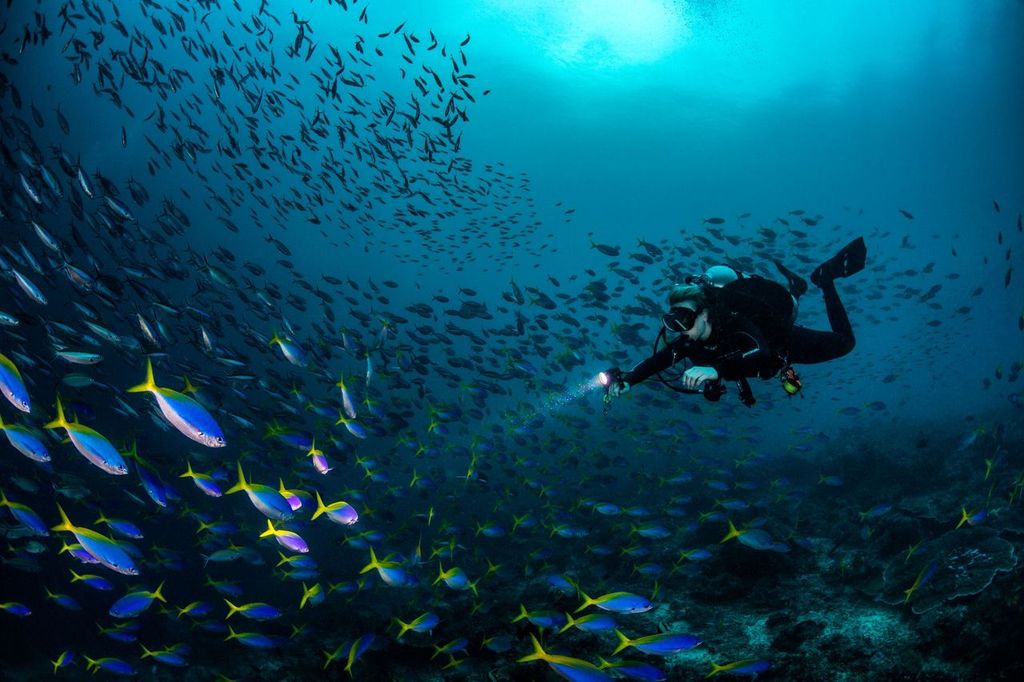
Among the many types of recreational diving, scuba diving is arguably the most popular and widespread. The term ‘scuba’ is actually an abbreviation of ‘Self-Contained Underwater Breathing Apparatus’, which is a set of gear that allows divers to breathe underwater for an extended period. These gears typically comprise oxygen tanks, a regulator, and a buoyancy compensator (BCD). Scuba diving is perfect if you want to observe marine life, coral reefs, and the underwater ecosystem.
2. Freediving
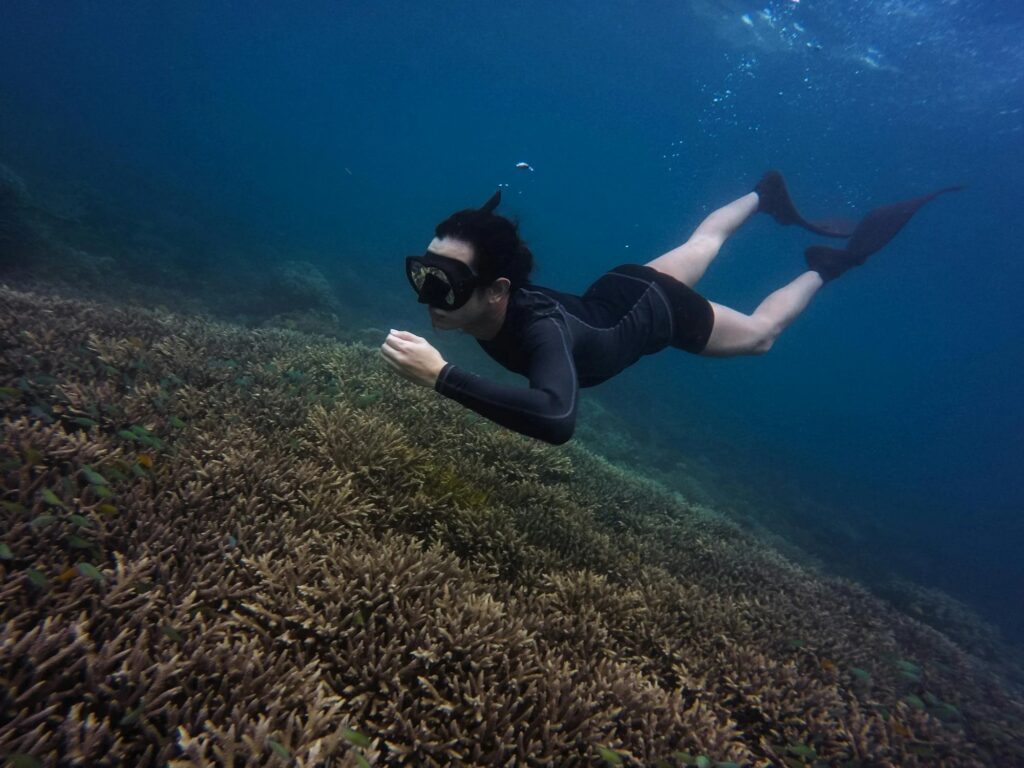
Also known as breath-hold diving, freediving is a type of diving that is done without using breathing apparatus. In other words, divers rely on holding their breath until resurfacing. Freediving is the oldest type of diving, and it promotes relaxation, breath control, and mental focus. It is a simple and minimalistic way to connect yourself with the ocean.
3. Snorkeling
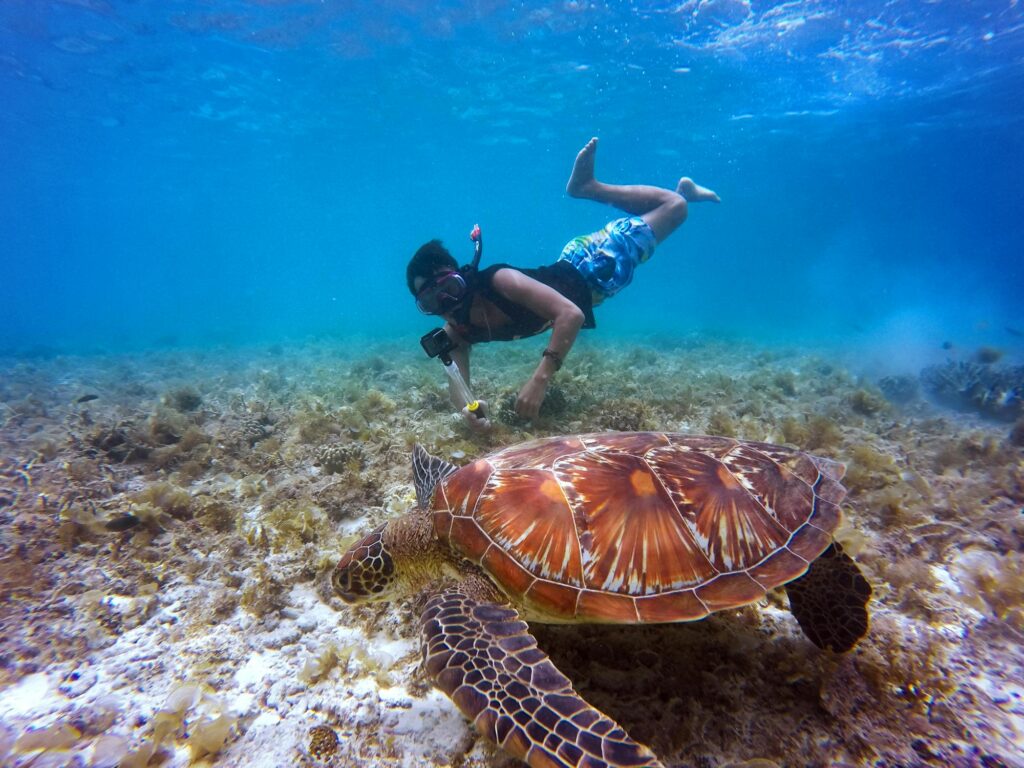
Though it’s technically different than diving, snorkeling is a great entry point to diving. It involves swimming at the water’s surface with a mask and a snorkel, which helps you to breathe as you observe marine life and corals in shallow areas. Snorkeling is accessible to many people and requires minimal training.
Specialty Diving
Specialty diving is all about taking your underwater adventures to the next level. With specialty diving, you can explore unique environments, master specific skills, and dive deeper into the ocean.
1. Wreck Diving
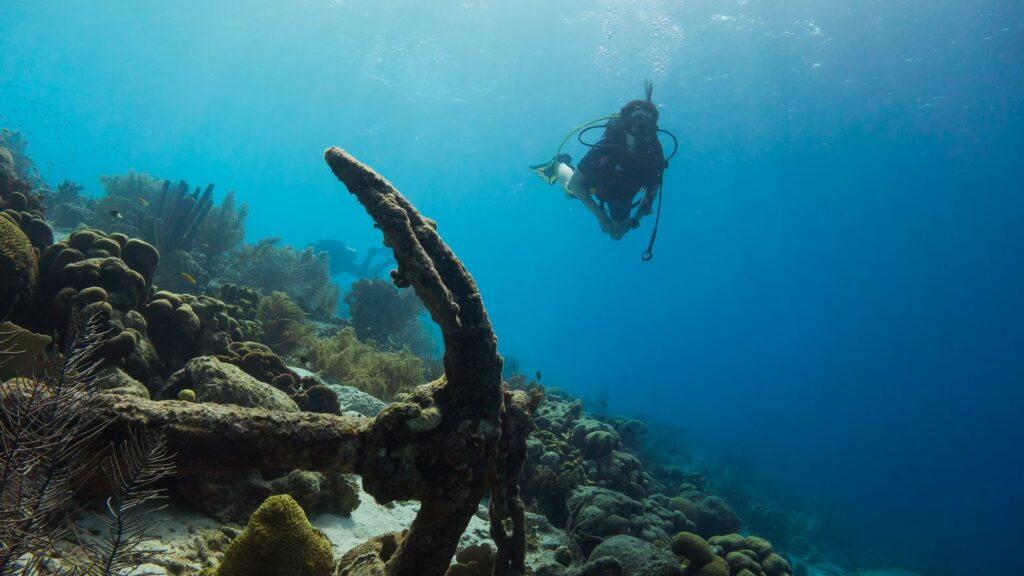
Wreck diving is a type of dive that focuses on exploring sunken wreckage of ships, aircraft, and other vehicles and structures. Over time, these wrecks turn into artificial reefs, where corals grow and provide habitat for many types of marine life. Some wrecks contain historical, monetary, or artistic value, which attracts divers due to their mystery and unique stories.
Certification Required:
- Open Water Diver (minimum requirement)
- Advanced Open Water
- Wreck Diver specialty course
Best Locations:
- Fujikawa Maru – Chuuk Lagoon, Micronesia
- USAT Liberty – Tulamben, Bali
- SS Yongala – Queensland, Australia
Essential Equipment:
- Two dive lights
- Wreck reel or spool
- Gloves
- Light hood
- Cutting tool
2. Deep Diving
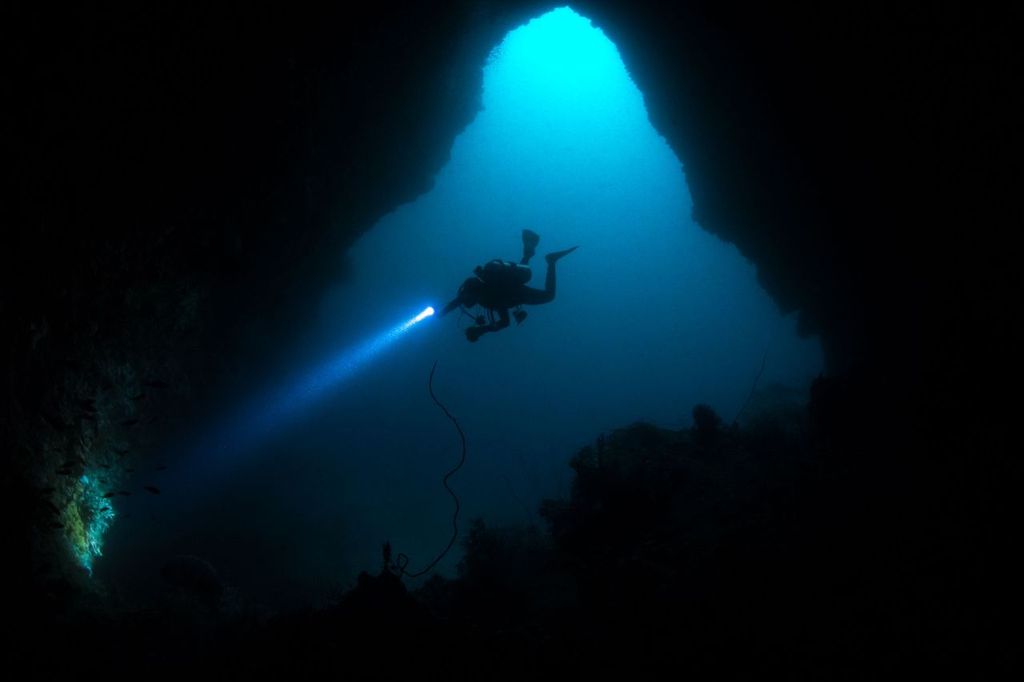
A form of dive that descends deeper than the usual depth standards recognized by divers. In general, anything past 60 meters (or 40 meters for recreational scuba divers) is considered deep diving. This diving style offers plenty of opportunities to see unique marine life and geological formations.
Certification Required:
- Advanced Open Water Diver (maximum up to 30 meters)
- Deep Diver specialty course (usually for dives up to 40 meters)
Best Locations:
- Raja Ampat, Indonesia
- Blue Hole, Belize
- Puerto Galera, Philippines
Essential Equipment:
- Breathing gas (surface supply of breathing gases is recommended)
- Rebreathers
- Decompression trapeze or decompression buoy
- Hot-water suits
- Diving bells
3. Night Diving
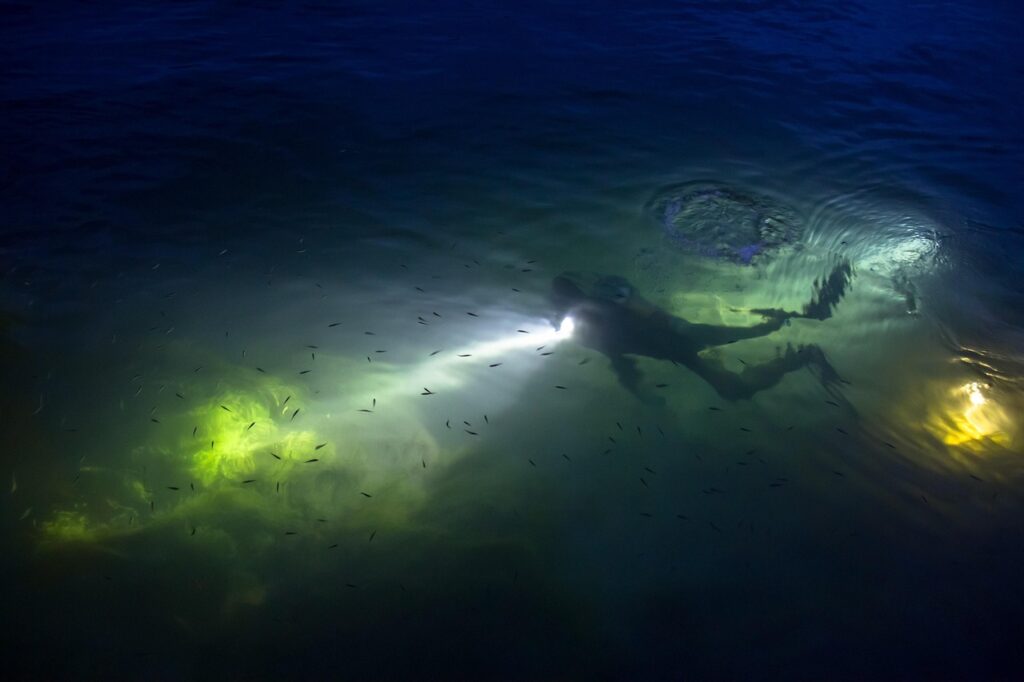
As you might expect from the name, night diving is a type of diving that is done at night. It’s a fantastic way to see a different side of the ocean, as many sea creatures are nocturnal and might be hard to spot during the day.
Certification Required:
- Open Water Diver (minimum requirement)
- Night Diver specialty course (highly recommended)
Best Locations:
- Kona, Hawaii
- The Pier, Anilao, Philippines
- Nudi Falls, Lembeh Strait, Indonesia
Essential Equipment:
- Dive light
- Marker buoy
- Strobe light
- Sound signaling devices
- Electronic navigation aids
4. Cave Diving
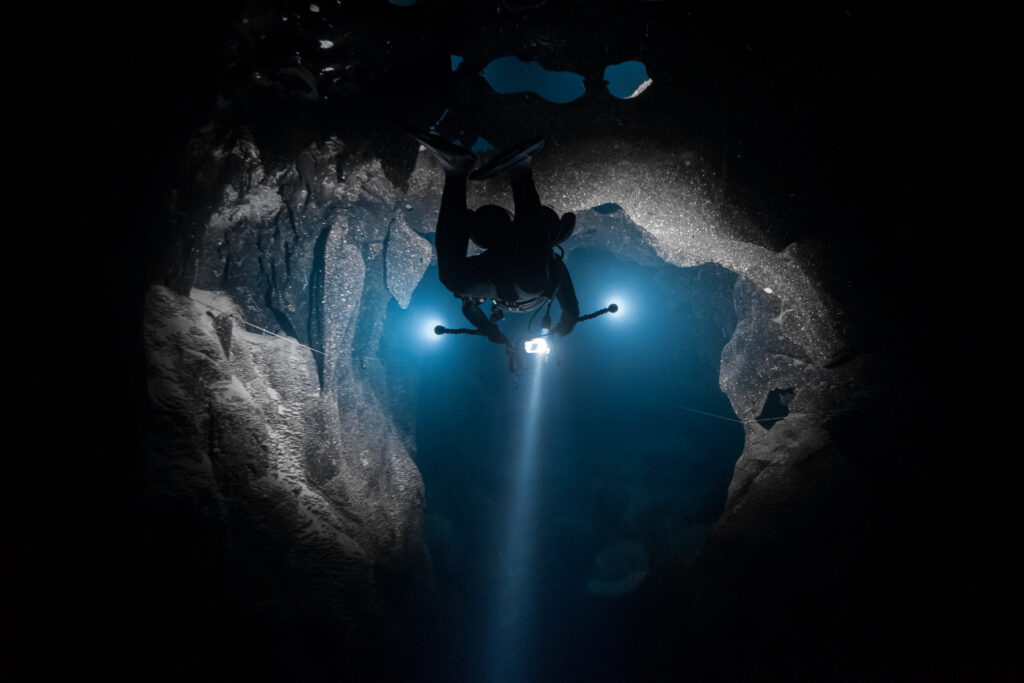
Cave diving is a type of diving that explores underwater caves. It can be done as an extreme sport, search and recovery, or for research purposes. Because of the overhead environments and extremely challenging terrain, cave diving is a high-risk activity and requires rigorous, specialized training.
Certification Required:
- Advanced Open Water Diver (pre-requisite)
- Cavern Diver specialty course (intro course)
- Intro to Cave specialty course (intermediate course)
- Full Cave specialty course (highest certification)
Best Locations:
- Chandelier Cave, Palau
- Nereo Cave, Sardinia, Italy
- Dos Ojos, Mexico
Essential Equipment:
- Guide line
- Dive lights (at least 3)
- Double tanks with a manifold
- Non-split fins
- Reels and spools
- Backup mask
- Line markers
- Backplate and wing (BP/W)
- Line cutter
- Exposure protection
Technical Diving

Technical diving (also known as tec or tech diving) is a more advanced form of recreational diving. It usually involves greater depths, requires mandatory decompression stops and multiple gas mixtures, or takes place in an overhead environment like caves or wrecks. This type of diving also has more risks, such as narcosis, oxygen toxicity, and decompression illnesses. Because of this, specialized procedures, equipment, and careful planning are required.
Core Characteristics:
- Depth: Usually beyond 40 meters.
- Decompression: Requires planned stops and staged ascent profiles using dive computers or tables.
- Gas mixtures: Uses other forms of breathing gas like trimix, heliox, or pure oxygen for decompression.
- Overhead environments: May take place in underwater caves, wrecks, or under-ice areas where direct ascent to the surface is blocked.
Training and Certification:
- Advanced Open Water (pre-requisite)
- Tec 40/45/50 (Padi TecRec)
- Technical Diver (TDI)
- IANTD Technical Diver
- NAUI and SSI Technical
Professional Diving
While many people associate diving with leisure and sport, it also serves important roles in various professional fields, such as construction, military operations, and scientific research. These divers often work in challenging, highly specialized environments and perform complex tasks under pressure.
Commercial Diving
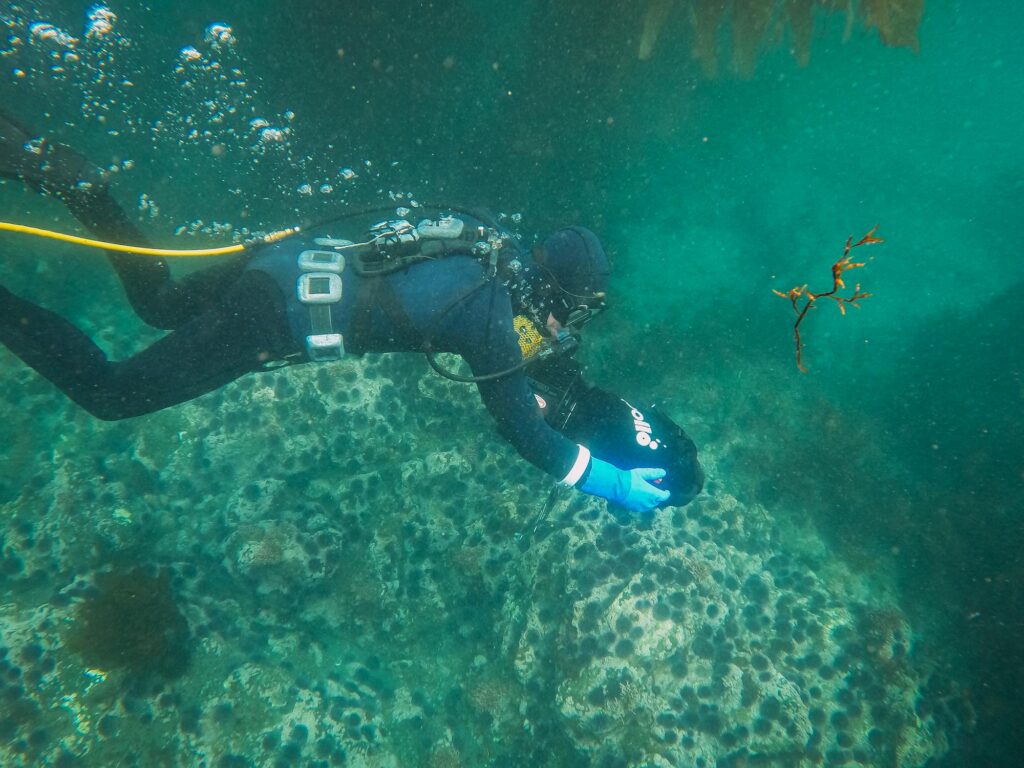
Have you ever seen offshore oil rigs or bridges and wondered who built and maintained them regularly? The answer is commercial divers. In simple words, commercial diving is a type of diving that is performed for industrial purposes, including underwater welding, ship hull inspections, oil rig maintenance, and bridge construction.
These tasks often take place in extreme conditions, such as cold water, low visibility, high-pressure depths, and even polluted water. Due to these demanding tasks and challenging environments, commercial divers use different and specialized equipment like rebreathers or surface-supplied breathing apparatus.
Certification Requirement:
Commercial divers undergo rigorous training and have specialized certifications, typically through programs accredited by the Association of Diving Contractors International (ADCI) or the International Marine Contractors Association (IMCA).
Military Diving
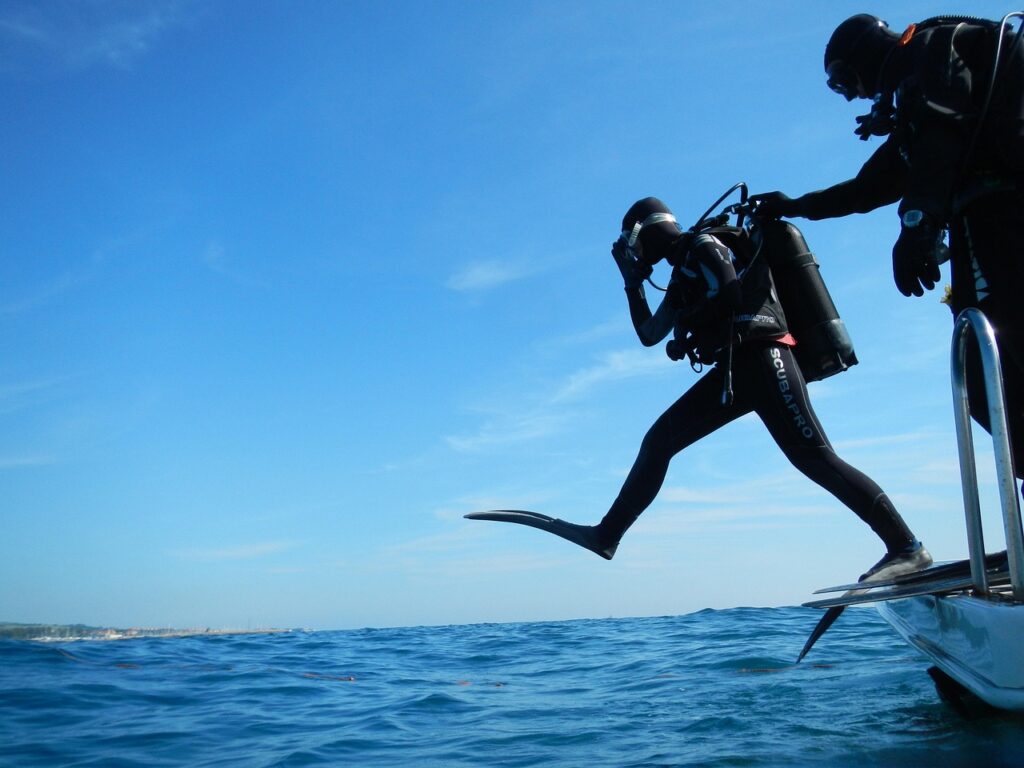
While commercial diving is done for industrial purposes, military diving supports defense and security operations. For example, reconnaissance, mine clearance, submarine rescue, underwater demolition, and intelligence-gathering. These divers are often part of elite units, such as the U.S. Navy SEALs or British Royal Navy Clearance Divers, and often work in combat zones or highly classified missions.
Military divers have to complete intense, specialized training through recognized military training establishments like the U.S. Navy Diving and Salvage Training Center in Florida or the Royal Navy’s Defence Diving School.
Scientific Diving
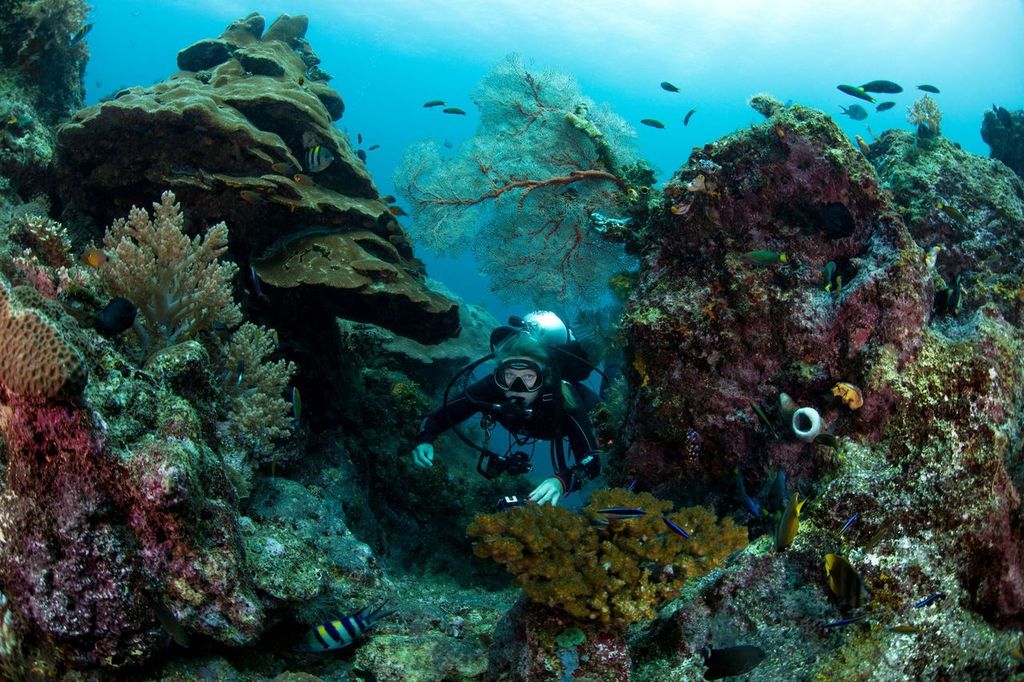
In scientific diving, researchers dive to explore, observe, and gather information for scientific purposes. For instance, marine biologists frequently conduct scientific diving to collect data and specimens, deploy instruments, and monitor ecosystems. Scientific diving can also be beneficial for archaeologists, geologists, and environmental scientists. Additionally, scientific divers also help astronauts in their training before they go to space.
Qualifications Required:
In the U.S., scientific diving is regulated by the American Academy of Underwater Sciences (AAUS). Additionally, most scientific divers are affiliated with universities or research institutions and must complete AAUS-standard training.
Let’s Dive with Solitude World’s Liveaboard and Resorts!

Are you eager to explore the underwater world through recreational diving? If so, let’s dive with Solitude World’s Liveaboard and Resorts!
Our liveaboards can take you to premier diving spots in Palau, the Philippines, and Indonesia, offering unforgettable encounters with vibrant coral reefs and diverse marine life. We also have PADI-certified guides on board to assist you during your underwater excursion, helping you to spot marine life and dive responsibly. After diving, relax and unwind in cozy cabins and treat yourself to hearty, chef-prepared meals to replenish your energy.
If you prefer land-based options, you can relax in comfort in our resorts, which are located in prime muck diving locations in Indonesia and the Philippines. Underwater photography workshops led by experts are available in these resorts, making them the perfect places to learn or even hone your underwater photography skills!
Book your next diving adventure with us here today!